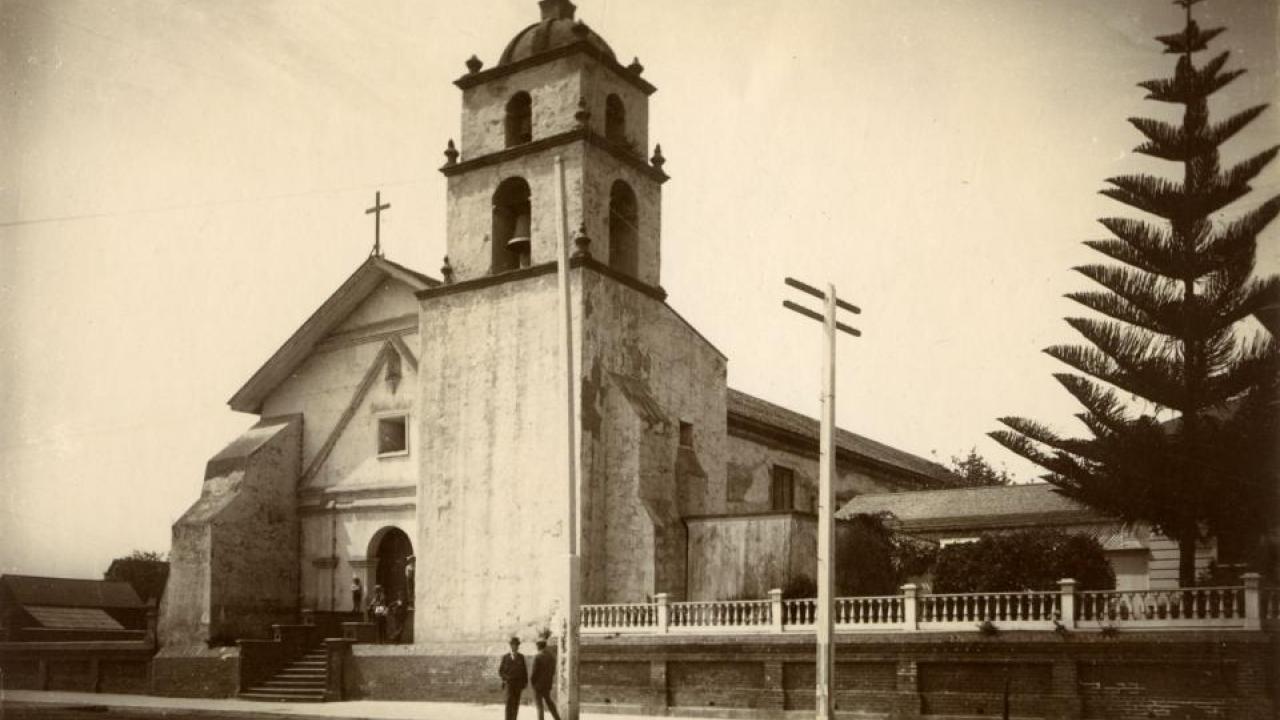
California K-12 Curriculum Becomes More Historically Accurate With Help From UC Davis
Original article from Karen Nikos-Rose on August 30, 2017 in Society, Arts & Culture
For generations, it was a rite of passage for 9-year-olds from San Diego to Eureka to craft popsicle-stick and sugar-cube models of a specific California mission. But, the fourth-grade “mission project” is disappearing from many classrooms, as the curriculum that students learn moves into a more accurate history reflecting all cultures.
“Building a mission doesn’t really teach anything of substance about the period, and it’s offensive to many,” said Nancy McTygue, executive director of the California History-Social Science Project, a statewide network of history educators headquartered at the University of California, Davis. “Instead, attention should focus on the daily experience of missions rather than the building structures themselves,” she explained.
Additionally, McTygue is one of the lead writers of California’s new History-Social Science Framework, state guidelines adopted last year that explain how educators can teach state content and literacy standards.
UC Davis is also home to the History Project, one of five CHSSP regional sites across California, housed in the Department of History. The History Project helps develop classes and workshops for teachers and principals.
UC Davis and outreach to schools
Last school year, parents in a Native American advocacy group raised concerns with the San Juan Unified School District in Sacramento about their children’s experiences with the mission project, and sought ways to work with the schools to provide alternative experiences to the mission project. Nicole Kukral, a program specialist for the district, knew who could help. She contacted the History Project at UC Davis seeking new ways to teach fourth-graders. The History Project subsequently held two half-day workshops for elementary school principals in the district to offer alternative teaching ideas.
“I think that it is an exciting time that we are thinking about it, and reframing the way we are talking about the missions,” said Kukral. “It’s more inclusive, and not so Eurocentric.”
But, at the same time, educators acknowledge, it’s challenging to teach the mission era and honor Native Americans’ experiences in a way that is appropriate for 9-year-olds.
Alternative and additional lessons
Instead of the mission project, the framework suggests alternative lessons for fourth-graders. They include inquiry-based activities that are designed to help students investigate the past by examining primary sources — documents and other artifacts from the period itself. Examples include:
- An investigation into the lives of the many groups of people that lived in California’s missions, presidios, haciendas and pueblos. How were people’s lives affected?
- How did the lives of California Indians change during the mission period? How did they stay the same?
- What crops were grown and what livestock were raised at the missions? How was this affected by climate and location?
In other parts of the framework, U.S. history teachers are encouraged to develop investigations, or research, on the Gold Rush and statehood, LGBTQ figures in history and the role of labor leaders and farmworkers in California agriculture. Students of world history are also encouraged to conduct investigations such as Afro-Eurasian trade and cultural interaction (in seventh grade), and revolutions in France, the United States and Haiti (10th grade).
Rebecca Rosa, professor in the UC Davis School of Education credential program, prepares future teachers in her classroom to bring these ideas to K-12 students. UC Davis faculty emphasize that the curriculum should be culturally relevant to the community in which they teach. Working closely with the History Project, she and others in the School of Education teach future instructors how to develop a lesson, and how to prepare for and discuss controversial topics that might arise.
Each district, and each community, Rosa noted, will have different issues — in some communities, the Holocaust will be a sensitive topic; in others, LGBTQ issues may have a particular relevance; and in still others, the Japanese American internment.
“It’s important that we are respecting and honoring differences of all people when teaching in the classroom,” Rosa said.
Teaching the teachers
UC Davis has played a major role in educating school districts statewide on alternative methods of teaching history across all grade levels. Stacey Greer, director of the History Project at UC Davis, has directed workshops throughout California on teaching the new K-12 framework. In the 2016-17 school year and summer, they worked with 11 school districts in a variety of workshops, classes and seminars.
Programs for teachers developed by UC Davis and the History Project include changes in the way world history is taught in sixth and seventh grade, the transcontinental railroad, civil rights, and incorporating technology into the classroom, among others.
“The focus of all of these programs is to enrich teachers’ content knowledge as well as their ability to teach through an inquiry method. From there, they can develop critical thinking and literacy skills to help prepare students to be informed and engaged,” Greer said. “We are pleased to be able to add to K-12 education in this way.”
You can find more information and the original article here.
